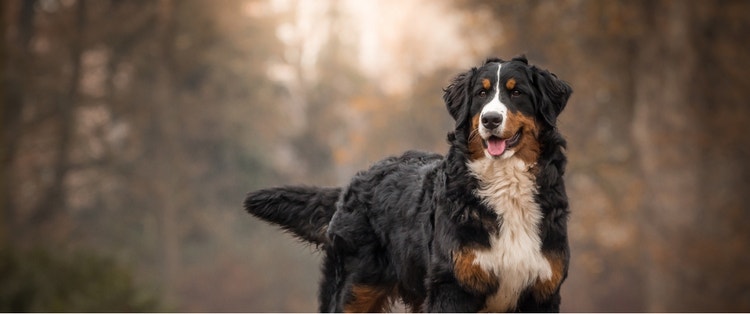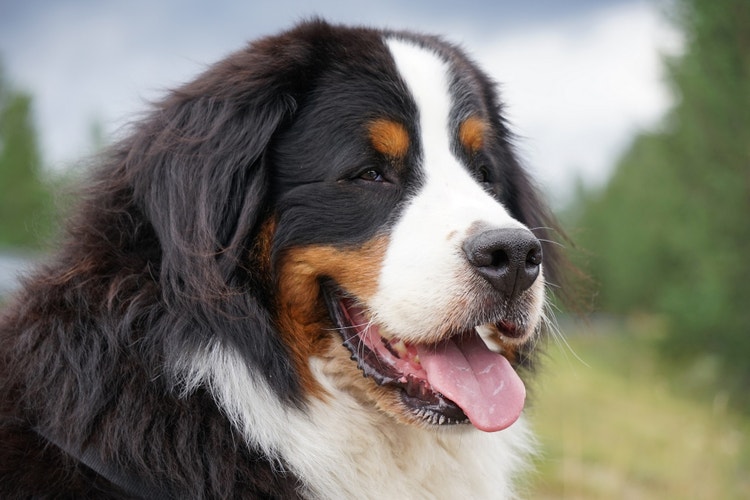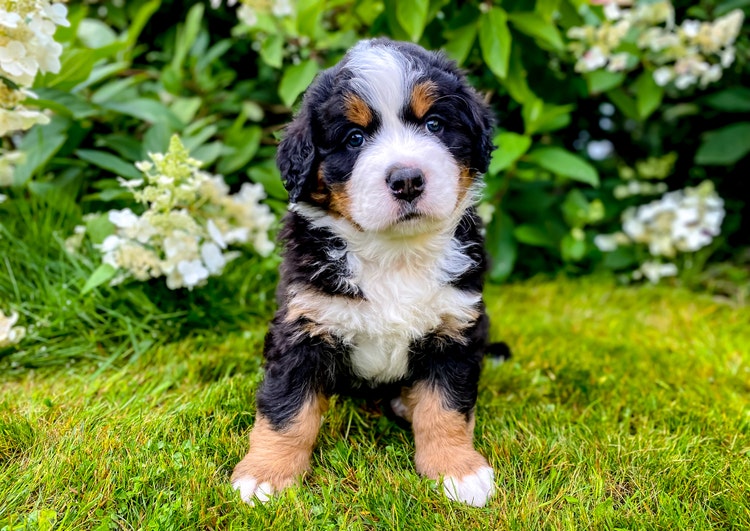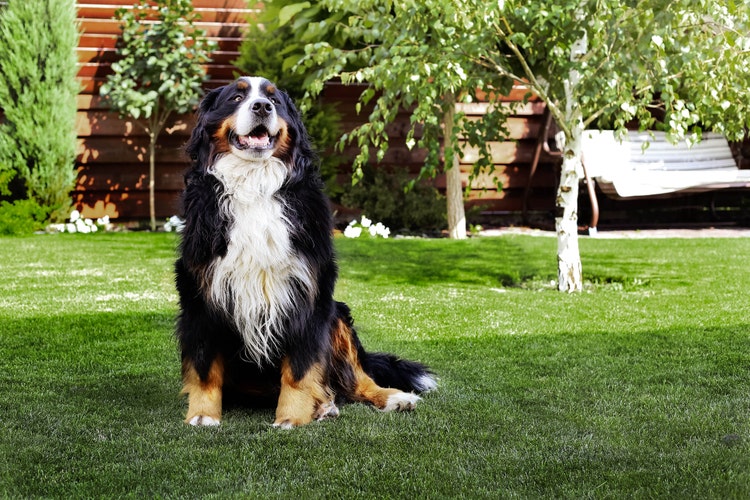
Bernese Mountain Dog


Where Are Bernese Mountain Dogs From?
The amiable Bernese Mountain dog is an old Swiss breed that was originally used for herding and drafting. They are believed to be the result of cross breeding between Roman Mastiffs and farm dogs from various parts of Switzerland. This large dog breed is extremely patient and laid-back, making them unsuitable for herd or farm guarding jobs.
Over the centuries, they faded from popularity as other breeds, like the St. Bernard, took their place. They were nearly extinct by the end of the 19th Century, until Herr Franz Schertenleib and Albert Heim took a great interest in reviving the breed. They were quite successful, and the Berner was recognized by the AKC in 1936.
Caring for a Bernese Mountain Dog
What Kind of Diet Does a Bernese Mountain Dog Need?
What Kind of Diet Does a Bernese Mountain Dog Need?
Bernese Mountain Dogs require a nutritious diet. They tend towards obesity if sedentary, so monitoring calorie intake is a must. Careful measurement of meals and judicious treat feeding will help keep your Berner at a healthy weight.
Do Bernese Mountain Dogs Shed?
Do Bernese Mountain Dogs Shed?
Bernese Mountain Dogs are notorious shedders. Be prepared for tumbleweeds! Brushing every other day or so will help keep the loose fur controlled, and bathing every few weeks will keep the coat glossy. Special tip: the soft “baby” hair behind their ears knots very easily, so ensure that this area is brushed frequently.
Are Bernese Mountain Dogs Healthy?
Are Bernese Mountain Dogs Healthy?
Bernese Mountain Dogs are prone to several breed-related diseases and have an average lifespan of 8 – 10 years. They should be screened for hip and elbow dysplasia, ocular disorders, and blood disorders.
Berners are predisposed to: gastric dilatation volvulus, hip and elbow dysplasia, Von Willebrand’s disease, shoulder osteochondrosis, entropion, cataracts, progressive retinal atrophy (PRA), histiocytic sarcoma, hemangiosarcoma, and heat stroke.
Are Bernese Mountain Dog’s Smart?
Are Bernese Mountain Dog’s Smart?
Absolutely! Berners are generally easy to train, thanks to their intelligence and easygoing nature. Puppy classes are a must to provide socialization and ensure that they understand basic commands.
How Much Exercise Does a Bernese Mountain Dog Need?
How Much Exercise Does a Bernese Mountain Dog Need?
Despite their hardworking nature, Berners only require moderate daily activity. They are extremely social; they love to play with children and other dogs, and will happily accompany their family on hikes.

Are You Ready to Adopt a Bernese Mountain Dog?
To adopt a Bernese Mountain Dog, start by making sure this type of dog will fit your lifestyle. Use our pet adoption checklist to walk through each step in the adoption process. Complete the necessary adoption applications and be prepared for interviews or home visits. Spend time with potential dogs to find a good match. Finally, prepare your home for the new pet, ensuring it's safe and welcoming.

Pet Insurance Options for Bernese Mountain Dogs
Pet insurance for a Bernese Mountain Dog may help cover costs for conditions like hip dysplasia, cancer, and bloat. Consider a policy that includes hereditary and congenital conditions, flexible coverage options, and reasonable premiums.
Use our insurance aggregator tool to compare providers and find the best plan for your dog's unique needs.
What Are the Physical Characteristics of a Bernese Mountain Dog?
Bernese Mountain Dog Facts
Other Breeds to Explore
References
- Bernese Mountain Dog Breed Information and Personality Traits. Hill’s Pet Nutrition, Inc., 2020.
- American Kennel Club. The Complete Dog Book. Random House Digital, Inc., 2006.
- Morris, Desmond. Dogs: The Ultimate Dictionary of Over 1,000 Dog Breeds. Trafalgar Square, 2002.
- Wilcox, Bonnie and Chris Walkowicz. The Atlas of Dog Breeds of the World. T.F.H Publications, Inc., 1995.


